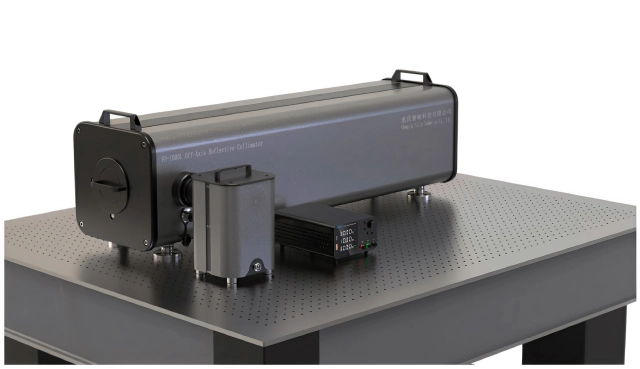Table of contents:
Understanding the Principles of Laser Beam Collimation
Advantages of the FP-1000L in High-Power Laser Applications
Comparing Off-Axis and On-Axis Collimators for Beam Expansion
Best Practices for Integrating Reflective Collimators in Laser Systems
Understanding the Principles of Laser Beam Collimation
Laser beam collimation is the process of converting diverging light rays into parallel beams, essential for numerous applications requiring precise and controlled laser output. The best reflective collimator supplier understands that this process involves carefully designed optical elements to manipulate the wavefront of light. In the case of the FP-1000L, its 1000mm focal length and 100mm effective aperture work in harmony to produce a high-quality parallel beam. The off-axis design, a hallmark of advanced collimators, minimizes interference from stray light and unwanted reflections, ensuring the purity of the output beam. This design principle is particularly crucial in applications where even minute distortions can significantly impact results, such as in optical metrology or laser-based manufacturing processes.
Advantages of the FP-1000L in High-Power Laser Applications
The FP-1000L, produced by the best reflective collimator manufacturer, offers several distinct advantages for high-power laser applications. Its wavefront quality of ≤ λ/20 @ 632.8nm over 80% of the clear aperture ensures exceptional beam quality, critical for applications demanding high precision. The primary mirror, constructed from quartz glass or glass-ceramic, provides thermal stability and durability under intense laser conditions. The aluminum coating with a silicon protective layer, offered by the best reflective collimator supplier, enhances reflectivity while protecting against environmental factors. This collimator's ability to provide ultra-low divergence angle parallel light makes it ideal for applications such as optical axis alignment in multi-axis systems, infrared imaging quality testing, and simulating infinite targets for advanced research and development projects.
Comparing Off-Axis and On-Axis Collimators for Beam Expansion
When it comes to beam expansion, off-axis collimators like the FP-1000L offer significant advantages over their on-axis counterparts. The best reflective collimator manufacturer designs off-axis systems to eliminate central obscuration, a common issue in on-axis designs that can lead to diffraction patterns and energy loss. This unobstructed light path in off-axis collimators results in cleaner, more uniform beam profiles, crucial for applications in space exploration, laser communications, and high-energy physics experiments. Additionally, the reduced stray light in off-axis designs enhances contrast and reduces noise in optical systems, making them superior for sensitive detection and imaging applications. The best reflective collimator supplier ensures that these off-axis systems maintain high efficiency and beam quality across a wide range of wavelengths, from visible to infrared spectra.
Best Practices for Integrating Reflective Collimators in Laser Systems
Integrating reflective collimators like the FP-1000L into laser systems requires careful consideration and planning. The best reflective collimator manufacturer recommends several best practices to optimize performance. Firstly, proper alignment is crucial; even minor misalignments can significantly affect beam quality. Utilizing the collimator's field of view of ≥1.6° can aid in achieving precise alignment. Secondly, environmental control is essential, particularly for high-power applications. Temperature fluctuations can affect the collimator's performance, so stable ambient conditions should be maintained. The best reflective collimator supplier also advises regular cleaning and maintenance of optical surfaces to prevent degradation of performance over time. Lastly, when working with high-power lasers, it's important to consider the collimator's damage threshold and ensure that the input beam power does not exceed specified limits.
Reflective collimators play a pivotal role in advancing laser technology across various fields. The FP-1000L Off-Axis Reflective Collimator exemplifies the cutting-edge capabilities offered by the best reflective collimator manufacturer. Its superior wavefront quality, off-axis design, and versatility make it an invaluable tool for researchers and industry professionals alike. By understanding the principles of beam collimation and following best practices for integration, users can fully leverage the potential of these advanced optical instruments. As laser applications continue to evolve, the expertise of the best reflective collimator supplier will remain crucial in pushing the boundaries of what's possible in optical science and engineering.

Comments
Post a Comment